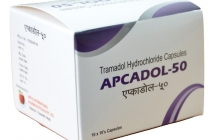Home / Categories / NITREST-10MG

NITREST-10MG
(10)
ZOLPIDEM -10MG
SEDATIVE & HYPNOTICS-NEWER
SUN PHARMA LTD
Product Details
| Zolpidem Tartrate |
| (ZOLE-pih-dem) |
| Ambien |
| Class: Sedative and hypnotic |
 Action Mechanism is unknown but may involve subunit modulation of the aminobutyrate activase (GABA) receptor chloride channel macromolecular complex.
Action Mechanism is unknown but may involve subunit modulation of the aminobutyrate activase (GABA) receptor chloride channel macromolecular complex.
 Indications Short-term treatment of insomnia.
Indications Short-term treatment of insomnia.
 Contraindications Standard considerations.
Contraindications Standard considerations.
ADULTS: PO 10 mg immediately before bedtime. ELDERLY, DEBILITATED, OR HEPATIC INSUFFICIENCY PATIENTS: An initial 5 mg dose is recommended. Maximum dose: Do not exceed 10 mg.
Food: Reduces absorption of zolpidem. Ritonavir: Possible severe sedation and respiratory depression.
 Lab Test Interferences None well documented.
Lab Test Interferences None well documented.
CV: Palpitations. CNS: Amnesia; daytime drowsiness; dizziness; headache; lethargy; “drugged feelings”, lightheadedness; depression; abnormal dreams; ataxia; confusion; euphoria; insomnia; vertigo. EENT: Sinusitis; pharyngitis; diplopia, abnormal vision. GI: Diarrhea; constipation; dry mouth. OTHER: Allergy; back pain; flu-like symptoms; chest pain.
Pregnancy: Category B. Lactation: Excreted in breast milk. Children: Safety and efficacy not established. Elderly/debilitated patients: Closely monitor these patients. Recommended dosage is 5 mg. Duration of therapy: Generally limit to 7 to 10 days, re-evaluate patient if to be taken for > 2 to 3 weeks. Abrupt discontinuation: Has been associated with withdrawal symptoms similar to those associated with other CNS depressant drugs. Hepatic function impairment: Dosage modification may be necessary. Abuse/Dependence: Use with caution in patients with history of drug or alcohol abuse, depression, or suicidal tendencies. Respiratory depression: Use with caution in patients with compromised respiratory function.
| PATIENT CARE CONSIDERATIONS |
|
- Available only in PO tablet form.
- Administer immediately before bedtime on an empty stomach.
- Store at room temperature (19° to 30°C; 66° to 86°F).
- Keep in tightly sealed, child-proof container.
- Obtain patient history, including drug history and any known allergies. Note hepatic impairment, debilitated status, and respiratory status.
- Ensure that side rails are raised after administration.
- Assist patient with ambulation after administration of drug.
- Assess sleep patterns prior to and during therapy.
- Assess for the development of abnormal thinking or behavior changes during therapy.
|
||||
- Advise patient to take immediately before going to bed. Advise patient to take on an empty stomach.
- Warn patient to never stop taking medication suddenly; withdrawal symptoms may develop.
- Instruct patient to avoid alcohol and other CNS depressants while taking drug.
- Caution patients to avoid driving or other tasks requiring alertness, coordination, or physical dexterity due to drowsiness that may occur.
- Instruct patient to take medication exactly as directed; do not increase dosage without health care provider approval.
- Emphasize the importance of follow-up appointments to monitor progress of therapy.
Books@Ovid
Copyright © 2003 Facts and Comparisons
David S. Tatro
A to Z Drug Facts
 Route/Dosage
Route/Dosage Interactions
Interactions Adverse Reactions
Adverse Reactions Precautions
Precautions Administration/Storage
Administration/Storage Assessment/Interventions
Assessment/Interventions Patient/Family Education
Patient/Family Education


